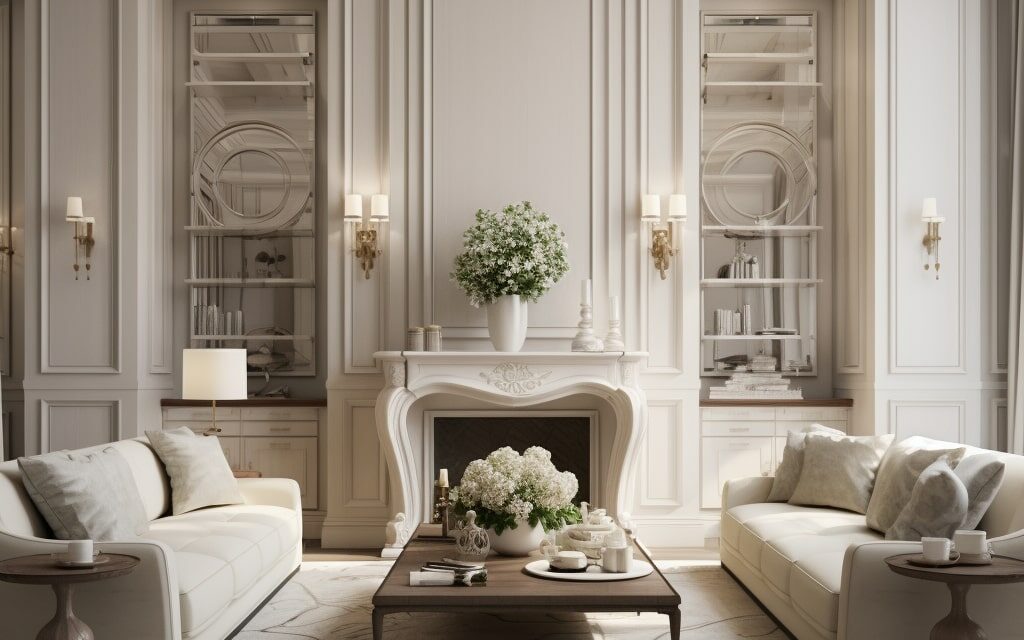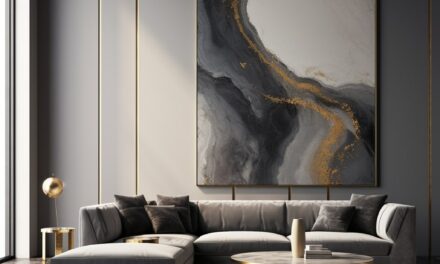If you’re someone who’s interested in interior design, you’ve probably heard the term “millwork” being thrown around quite a bit. But what exactly is it?
Put simply, millwork refers to any type of woodwork that is produced in a mill. This includes anything from crown molding and baseboards to mantels and cabinetry. In this guide, we’ll dig deeper into the world of millwork in interior design and explore its various types, materials, benefits, and installation process. By the end of this article, you’ll have a better understanding of what millwork is and how it can be used to elevate the aesthetics and functionality of your living space.
What Is Millwork in Interior Design?
Millwork represents the art of creating customized woodwork pieces to fit the specific dimensions and requirements of an interior space. In interior design, millwork is an essential aspect that can add both aesthetic appeal and functionality to a room.
Types of Millwork
There are various types of millwork commonly used in interior design, ranging from intricate crown moldings to elegant wainscoting panels. Other examples of millwork include baseboards, door jambs, window casings, and cabinetry.
Millwork is not limited to wood. It can also be created using different materials, such as MDF (Medium Density Fiberboard), PVC (Polyvinyl Chloride), or composite materials.
Millwork in Architecture
Millwork is often incorporated into architectural elements of a building, such as arches, columns, and pediments. This not only adds visual interest to the space but also emphasizes the architectural style of the building.
When designing an interior space, millwork is used to create distinct features that enhance the overall aesthetics of the room. It provides a way to add unique and personalized touches to a space while also serving functional purposes, such as concealing wiring or providing storage.
Related: What is the difference between interior design and interior architecture?
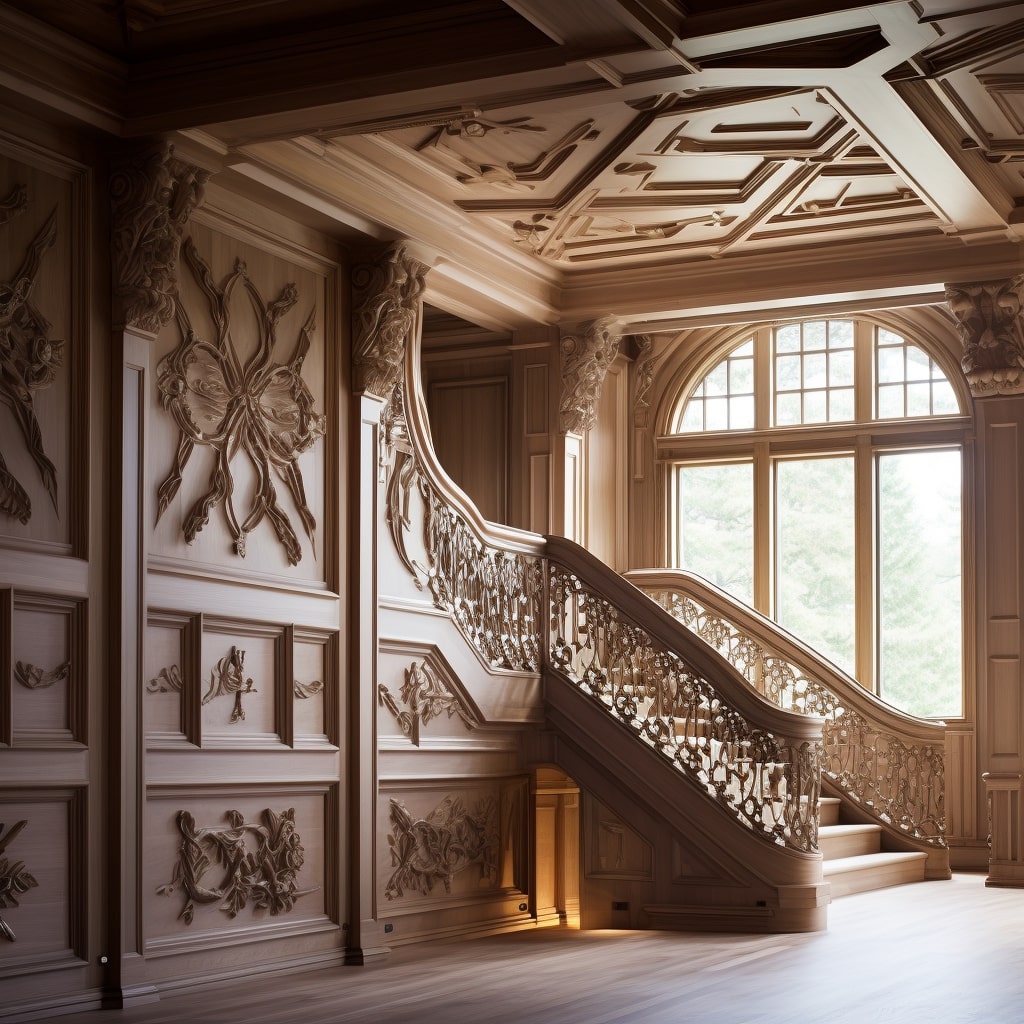
The Importance of Millwork in Interior Design
Millwork is an essential aspect of interior design, as it has a significant impact on both the aesthetics and functionality of a space. It adds character, warmth, and texture to an environment, enhancing the overall appeal of a room. Additionally, it can be used to create personalized spaces that reflect the individual’s taste and preferences.
Moreover, millwork plays a crucial role in improving the functionality of a room by providing customized storage solutions, such as cabinets, bookshelves, and closets. It can also be used to divide large spaces into smaller, more intimate areas, creating a sense of coziness and comfort.
Another benefit of incorporating millwork in interior design is that it can increase the value of a property, as it is considered a luxurious aspect of a home. Potential buyers often appreciate the attention to detail and high-quality craftsmanship that goes into custom millwork installations, which can make a property more attractive and desirable.
Benefits of Incorporating Millwork in Interior Design
Millwork is an essential element of interior design that can elevate the aesthetic and functional aspects of a space. Here are some of the key benefits of incorporating millwork in your interior design projects:
| Benefit | Description |
|---|---|
| Customized Solutions | Millwork allows for customized solutions that fit your unique design preferences and requirements. Whether you’re looking for intricate mouldings, custom cabinetry, or decorative wall panels, millwork can be tailored to your specifications. |
| Enhanced Durability | Millwork products are constructed from high-quality materials, which ensure their long-term durability. This makes them an excellent investment for homeowners who want to enhance the value of their property. |
| Increased Property Value | Investing in millwork can increase the value of your property, making it more attractive to potential buyers. This is especially true for high-end finishes and custom-made pieces, which can significantly enhance the overall aesthetic of a space. Great for luxury design styles. |
Furthermore, millwork can be used to create unique visual elements that add character and personality to a space. From intricate trim work to decorative ceiling beams, millwork provides endless opportunities for creative expression and customization.
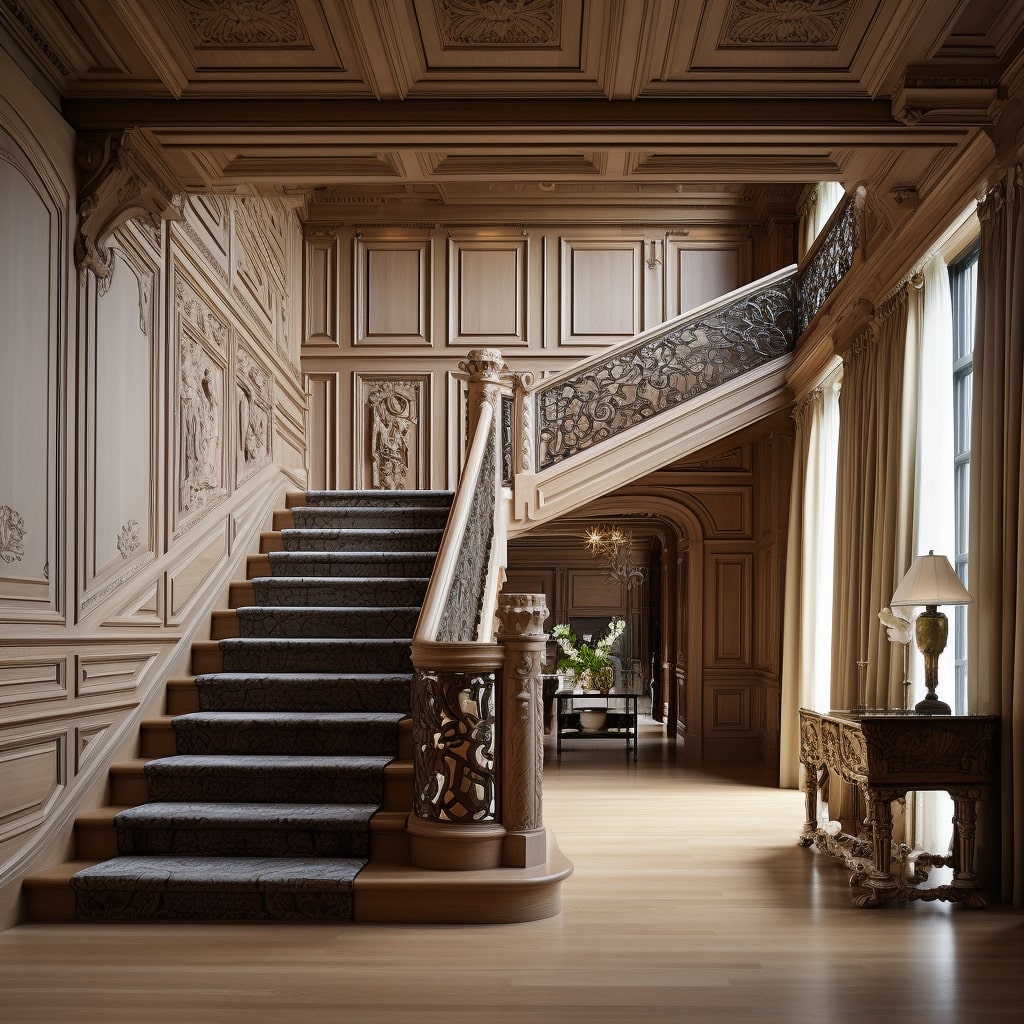

Common Materials Used in Millwork
Millwork can be made from a variety of materials, each with its own set of advantages and disadvantages. Here are some of the most commonly used materials:
| Material | Characteristics | Suitable for |
|---|---|---|
| Wood | Durable, versatile, natural grain patterns | Traditional, rustic, or modern designs |
| MDF (Medium Density Fiberboard) | Uniform density, smooth surface | Painted millwork, modern designs |
| Composite Materials | Budget-friendly, easy to maintain | Contemporary or minimalist designs |
Wood is the most common material used in millwork, as it provides warmth and character to a space. However, MDF is becoming increasingly popular because of its uniformity and suitability for painted millwork. Composite materials are also an attractive option for those on a budget or seeking easy-to-maintain materials.
Millwork Installation Process
Installing millwork in interior design projects requires careful planning and execution to ensure that the final product meets the client’s expectations. Here are the basic steps involved in the millwork installation process:
| Step | Description |
|---|---|
| 1 | Design and Planning |
| The first step in the millwork installation process is to create a design plan that incorporates the client’s preferences and specifications. This involves taking accurate measurements of the space and creating a detailed layout plan that outlines where the millwork will be installed. Tip: Rendering your designs can help the planning phase without needing to commit to work. | |
| 2 | Material Selection |
| Once the design plan is finalized, the next step is to select the appropriate materials for the millwork. Depending on the design style and functionality requirements, different materials such as wood, MDF, and composite materials may be used. | |
| 3 | Production and Fabrication |
| After the materials have been selected, the millwork components are produced and fabricated according to the design plan. This involves using specialized equipment and techniques to ensure the millwork meets the necessary quality standards. | |
| 4 | Delivery and Inspection |
| Once the millwork components are completed, they are delivered to the installation site for inspection. This stage helps to ensure that the components are of the correct size, shape, and quality before the installation process begins. | |
| 5 | Installation and Finishing |
| The final step in the millwork installation process involves the actual installation of the components and finishing touches. This involves using specialized tools and techniques to ensure that the millwork is securely installed and that any necessary finishing touches are complete, such as sanding and painting. |
During the installation process, it is essential to monitor the progress and address any potential issues that may arise. The installation team should also ensure that the site is cleaned up and left in good condition once the installation is complete.
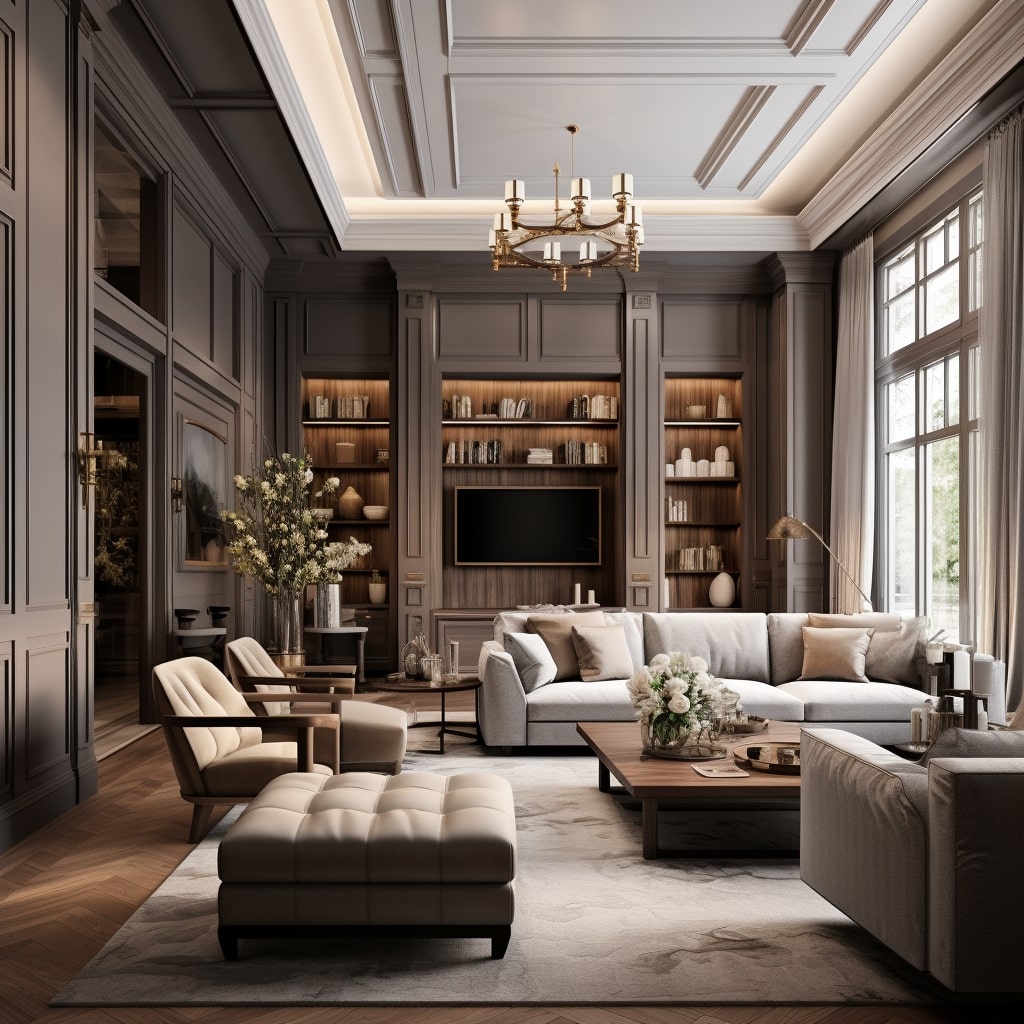

Considerations and Potential Challenges
There are several factors to consider when installing millwork in interior design projects. These include:
- The availability of space
- The type of materials used
- The style and design preferences of the client
- The project timeline and budget
Potential challenges that may arise during the millwork installation process include:
- Difficulties in accurately measuring and fitting millwork components
- Issues with materials and components arriving damaged or defective
- Problems with site conditions such as uneven walls or floors
- Unforeseen issues that arise during the installation process
However, with careful planning, regular communication, and skilled installation teams, these challenges can be minimized or avoided altogether.
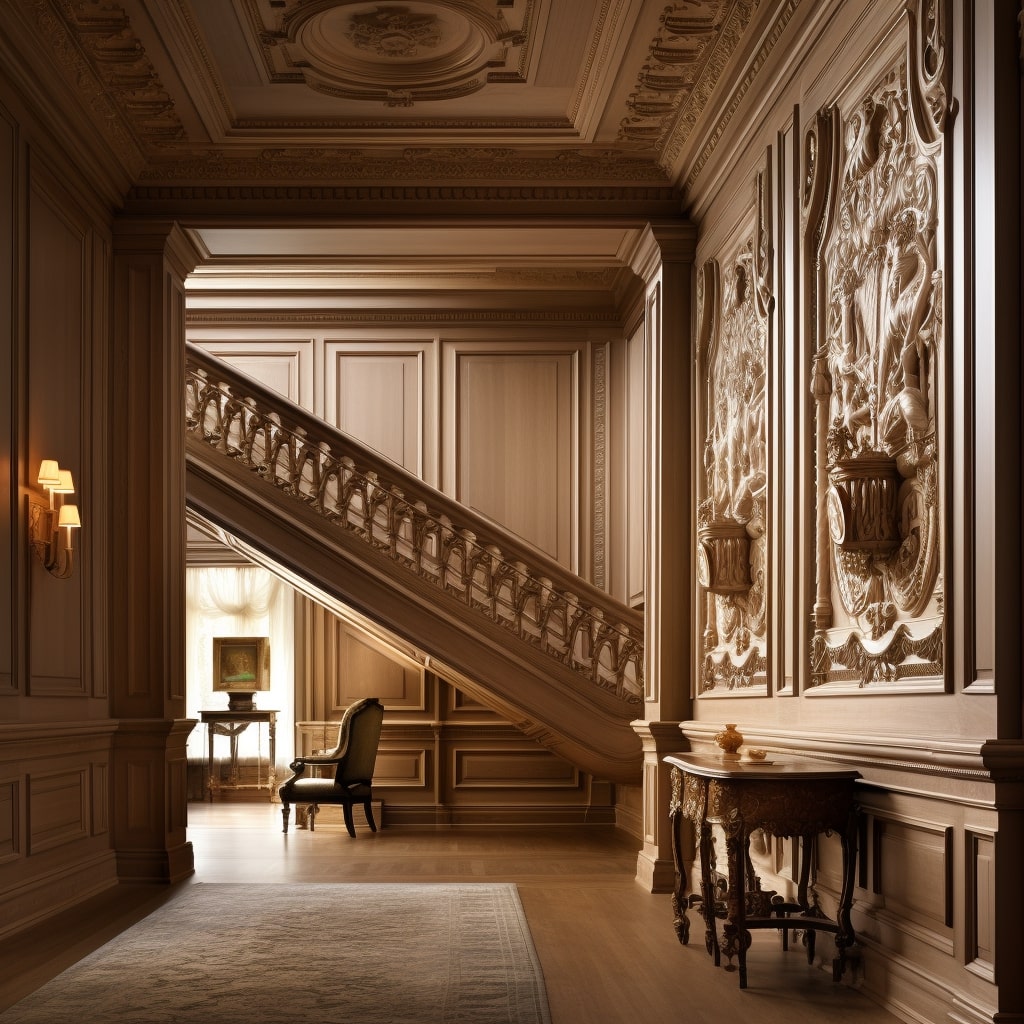

Design Ideas Using Millwork in Interior Design
Millwork is a versatile and customizable addition to any interior design project. From adding character to bland spaces to creating functional storage solutions, millwork can be used in various ways to enhance different areas of a home. Here are some inspiring design ideas that incorporate millwork:
Kitchen Cabinets and Islands
Millwork can be used to create unique and customized kitchen cabinets and islands that cater to specific design preferences and storage needs. From classic wood paneling to sleek and modern designs, millwork can add character and functionality to any kitchen.
| Benefits: | Durable, personalized, functional |
|---|---|
| Materials: | Wood, MDF, composite materials |
Bathroom Vanities and Storage
Millwork can also be used to create stylish and practical bathroom vanities and storage solutions. Customized millwork can take any bathroom to the next level, providing ample storage while enhancing the overall aesthetic.
| Benefits: | Elevates bathroom design, functional storage |
|---|---|
| Materials: | Wood, MDF, composite materials |
Customized Closets
Millwork can be used to design and build customized closets that cater to specific storage needs and design preferences. From shoe racks to pull-out drawers, millwork can add functional elegance to any closet space.
| Benefits: | Optimized storage, personalized design |
|---|---|
| Materials: | Wood, MDF, composite materials |
Living Room and Dining Room Built-In Shelves
Adding built-in shelves to living and dining rooms is a great way to create a focal point and showcase decorative items while providing extra storage. Using millwork to create built-in shelves adds depth and elegance to any space.
| Benefits: | Enhanced storage and display, aesthetic focal point |
|---|---|
| Materials: | Wood, MDF, composite materials |
These are just a few examples of how millwork can be used to elevate any interior design project. With its customizability, functionality, and durability, millwork is an essential aspect of modern interior design.
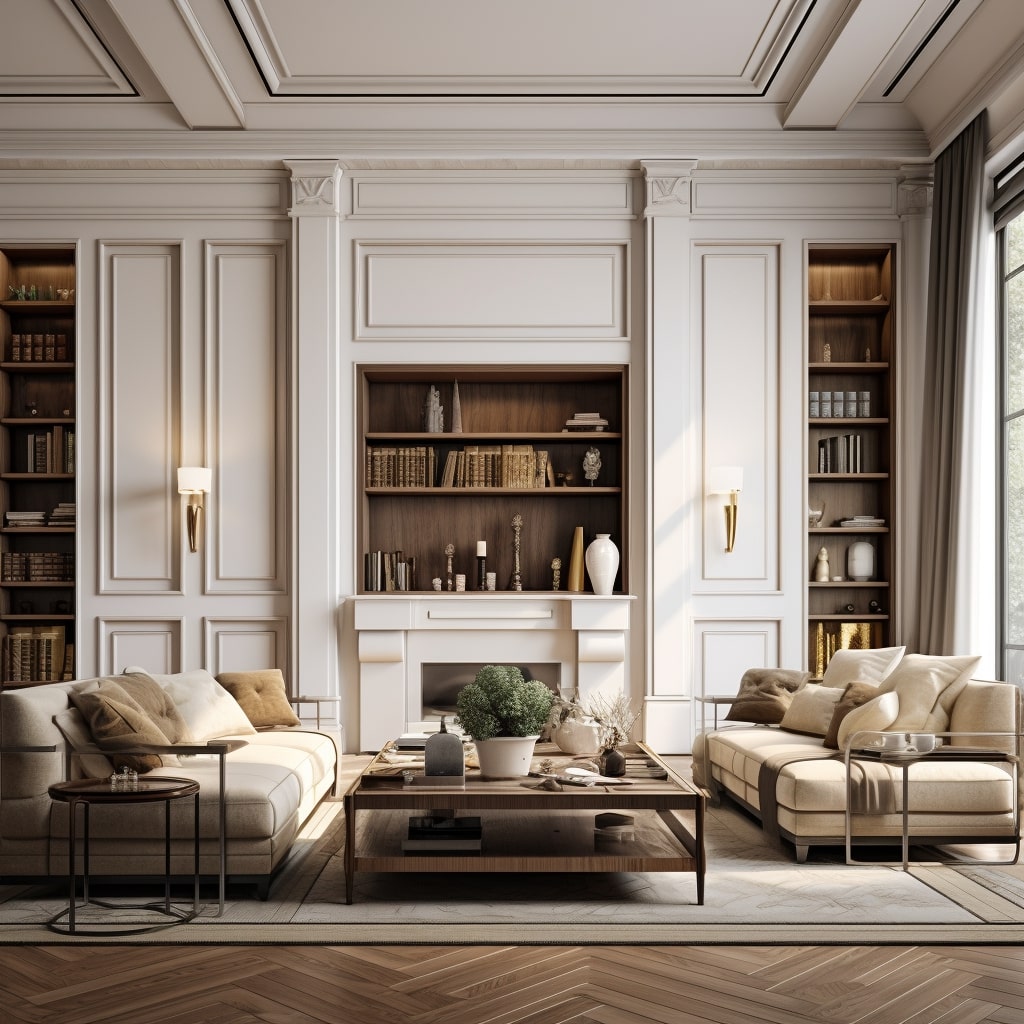

Custom Millwork for Personalized Spaces
When it comes to interior design, customization is key to creating a truly unique and personalized space. This is where custom millwork solutions come in, offering a range of benefits that go beyond off-the-shelf options. With custom millwork, you can have greater control over the design, materials, and finishes used, resulting in a one-of-a-kind product that perfectly fits your vision and requirements.
Custom millwork also allows you to choose from a wider range of styles, from traditional to contemporary and everything in between, such as classic modern design. This means that you can create a cohesive look throughout your home, with millwork elements that complement each other and add a sense of continuity to the design. Additionally, custom millwork can be tailored to fit challenging spaces, such as sloping ceilings, curved walls, or non-standard room layouts, ensuring that every inch of your home is utilized to its full potential.
Another advantage of custom millwork is the quality of craftsmanship that goes into each piece. Rather than being mass-produced in a factory, custom millwork is typically created by skilled artisans who take pride in their work and pay close attention to detail. This results in a superior product that is more durable, long-lasting, and visually stunning than its factory-made counterparts.
Overall, custom millwork is a worthwhile investment for anyone looking to elevate their interior design to the next level. By creating bespoke solutions that are tailored to your specific needs, preferences, and style, you can transform your home into a true reflection of your personality and taste.
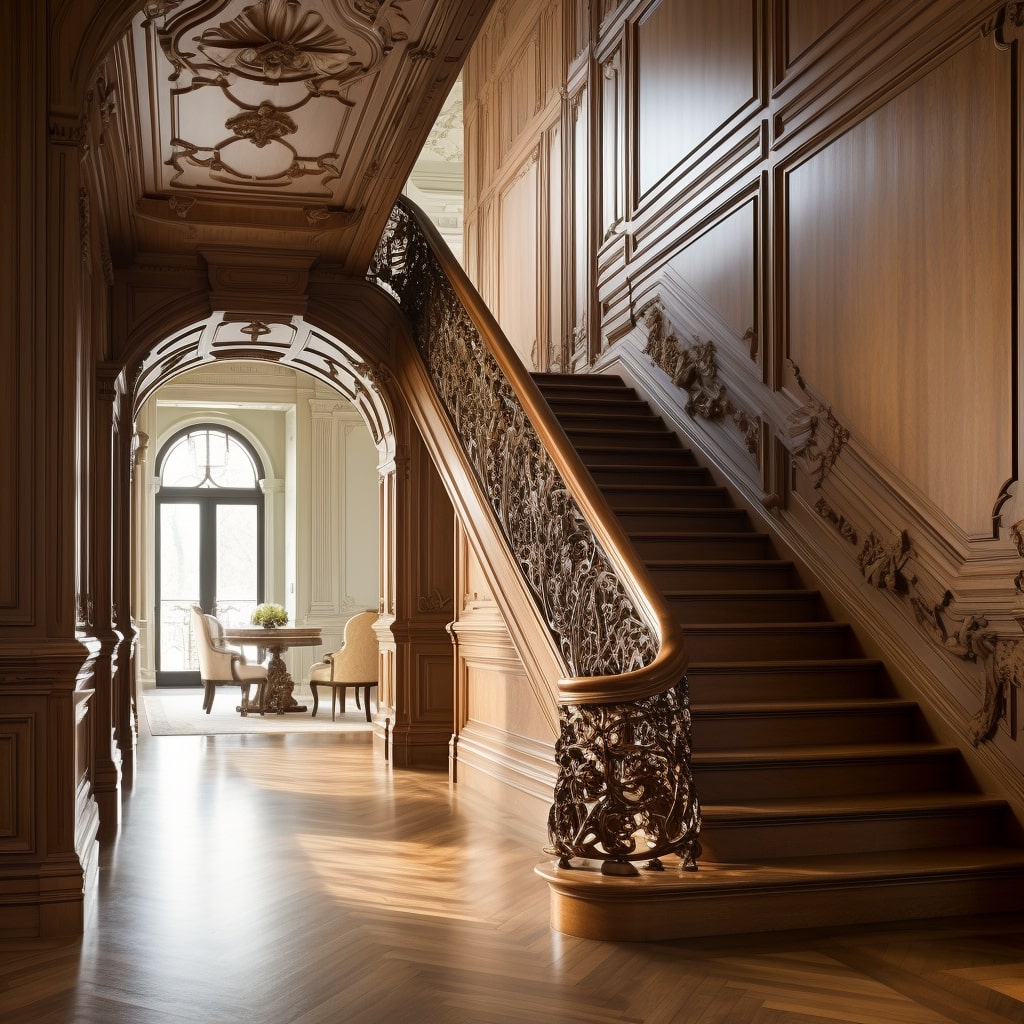

Frequently Asked Questions about Millwork in Interior Design
If you’re looking to enhance the aesthetics and functionality of your home, incorporating millwork into your interior design can be an excellent option. However, you may have some questions about the process, materials, and benefits of millwork. Here are some of the most frequently asked questions about millwork in interior design:
What is millwork, and what does it include?
Millwork refers to the customization of woodwork and other building materials to fit specific interior design requirements. It can include a variety of architectural elements, such as crown molding, baseboards, window casings, and cabinetry, among others.
What materials are commonly used in millwork?
The materials used in millwork can vary depending on the design style and requirements. Wood is a popular option, including hardwoods like oak, cherry, and maple, as well as softwoods like pine and cedar. Other materials such as MDF and composite materials can also be used.
What are the advantages of incorporating millwork in interior design?
Millwork can offer numerous benefits, including customized solutions, increased durability, and improved property value. It can also enhance the aesthetics of a room, adding visual interest and depth to the design.
What is the installation process for millwork?
The millwork installation process typically involves measuring and cutting the materials to fit the specific design requirements, preparing the surfaces for installation, and securing the millwork in place. It’s essential to work with a professional to ensure proper installation techniques and avoid potential challenges.
Can millwork be personalized to fit individual design preferences?
Yes, custom millwork solutions can be tailored to fit individual design preferences and specific requirements. This can include incorporating unique design elements, selecting specific materials, and choosing finishes that match the overall design aesthetic of the room.
Is millwork suitable for all design styles?
Millwork can be incorporated into a wide range of design styles, from traditional to contemporary. However, the specific type of millwork and materials used may vary depending on the style and requirements of the design. I find it works particularly well for luxury design styles.
How can I use millwork to enhance the design of my home?
There are numerous design ideas that incorporate millwork, including adding crown molding to a room, installing window casings to frame natural light, or incorporating custom cabinetry to maximize storage space. Consult with a professional designer or contractor to find the best solutions for your home’s specific needs.
What is the cost of incorporating millwork in my interior design?
The cost of millwork can vary depending on the specific materials, scope of the project, and installation requirements. It’s important to discuss your budget and requirements with a professional to receive an accurate estimate for your project.
How can I ensure the quality of my millwork?
Working with a reputable and experienced millwork provider is essential to ensure the quality of your project. Be sure to research potential providers, review their portfolio, and check their references before making a final decision.
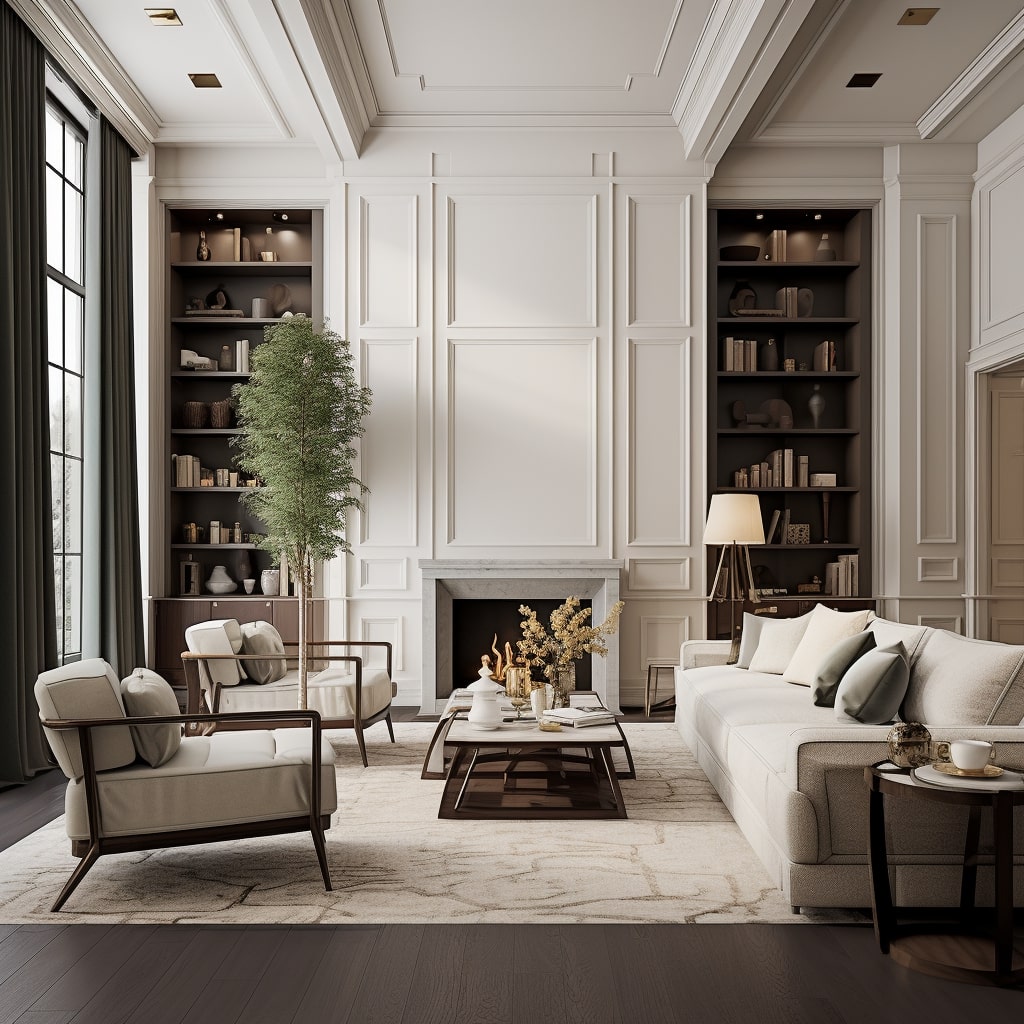

Get Started Today
If you are considering using millwork in your next interior design project, we encourage you to consult with a professional to ensure that you get the best results. By working with an experienced millwork expert, you can benefit from their expertise and knowledge, and create a space that is both functional and beautiful.







